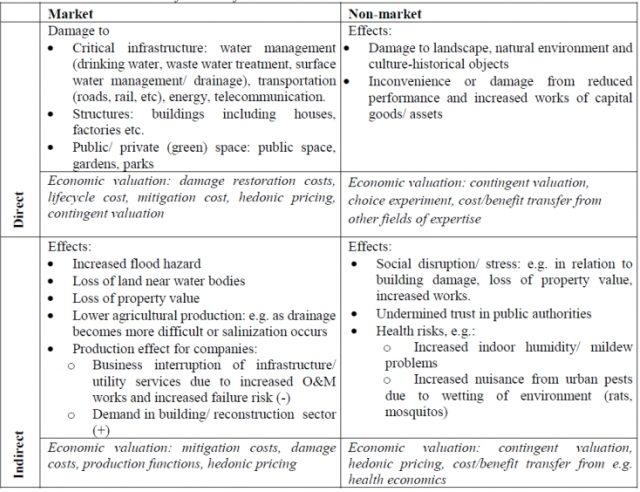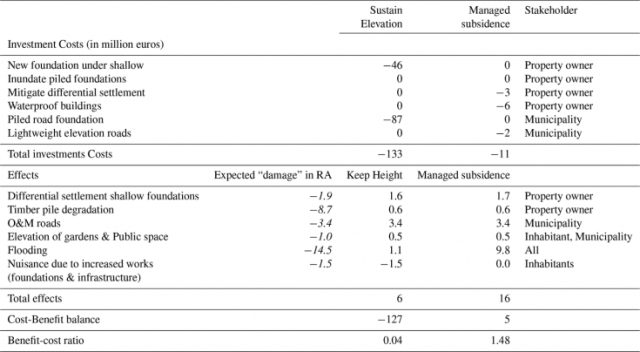A new framework for assessing the economic impact of land subsidence
A more accurate assessment of the economic impact of subsidence is needed to decide whether intervention is required and what form that intervention should take. Until now, there has been no consistent framework for assessing the economic costs of subsidence. Kok and Costa propose a standardised framework which provides a sound basis for comparable and consistent decision-making about subsidence risk: how big is the problem, what are the key impacted areas and sectors? This information can be used to weigh the benefits of expected interventions against their costs.

The assessment of the economic cost of subsidence is a key input for developing actionable and economically sensible policy for dealing with subsidence in various phases of the policy cycle: agenda-setting, problem definition, evaluation of strategies and implementation (including financing). To establish a baseline, the paper reviews the current literature on the assessment of the economic cost of subsidence and proposes a standardised assessment framework building on similar existing frameworks for other natural hazards.

Subsidence can have major economic impacts
According to the study ‘Mapping the global threat of land subsidence’, 19% of the global population and 12% of global GDP, US$ 8,17 trillion, are based in locations that are susceptible to subsidence. Subsidence can have a major impact given increasing flood risk. It can even result in permanent land loss, damage to infrastructure and buildings, and damage to the environment. All continents have areas which are susceptible to subsidence, but North America, Asia, Europe and the south of Australia are particularly striking examples. Damage reports from these regions illustrate that the economic consequences are not hypothetical. For example, without significant mitigating investments, additional flood risk due to subsidence will amount to $635 billion/year by 2050 in coastal cities around the globe (1). In the Netherlands, the subsidence of peat soils is expected to lead to €22 billion in damage to infrastructure and buildings between now and 2050 (2) and, in Mariscopa County in the USA, the loss in terms of property value due to subsidence is estimated at US$ 4 billlion (3).
Subsidence management plan in Gouda, the Netherlands
An illustration of the value of such economic analyses is the cost-benefit analysis developed for the historic city centre of Gouda, the Netherlands. Against a backdrop of subsidence of 3-5 mm/year, an increasing flood risk and a mix of buildings on shallow foundations and timber pile foundations, groundwater management has become increasingly complicated in recent decades. Lowering the groundwater level further, though desirable to reduce flooding problems and groundwater nuisance in low-lying houses, is expected to lead to significant damage in timber pile structures due to fungal degradation. A cost-benefit analysis found that a strategy of measures to mitigate damage from subsidence (such as waterproofing houses) was preferable to a strategy focusing on the complete prevention of subsidence.

- Hallegatte, S., Green, C., Nicholls, R. J. & Corfee-Morlot, J. Future flood losses in major coastal cities. Nat. Clim. Chang. 3, 802–806 (2013).
- Born, G. J. et al. Dalende bodems , stijgende kosten. Mogelijke maatregelen tegen veenbodemdaling in het landelijk en stedelijk gebied. http://www.pbl.nl/sites/defaul... soils, rising costs_Findings.pdf (2016) doi:1064.
- Yoo, J. & Perrings, C. An externality of groundwater depletion: land subsidence and residential property prices in Phoenix, Arizona. J. Environ. Econ. Policy 6, 121–133 (2016).

